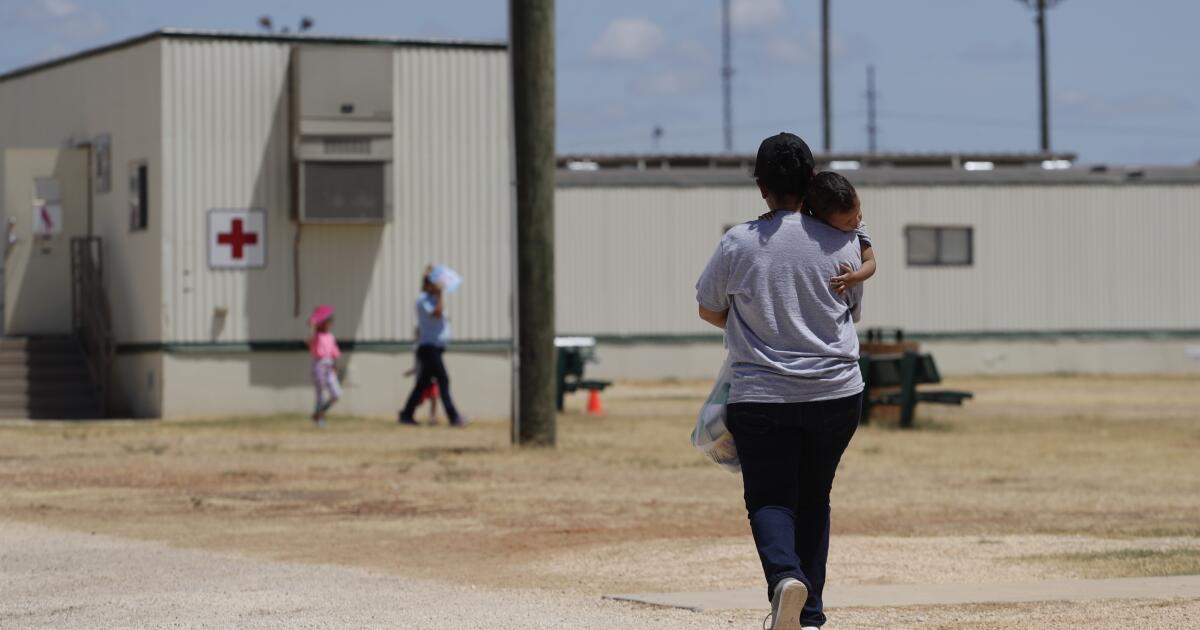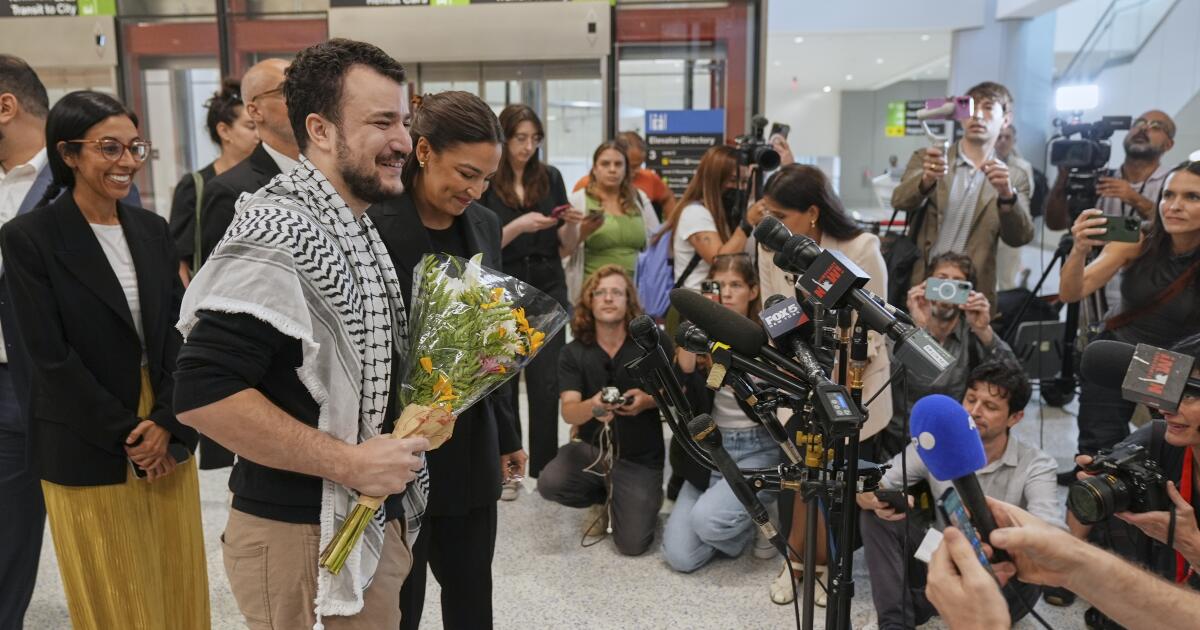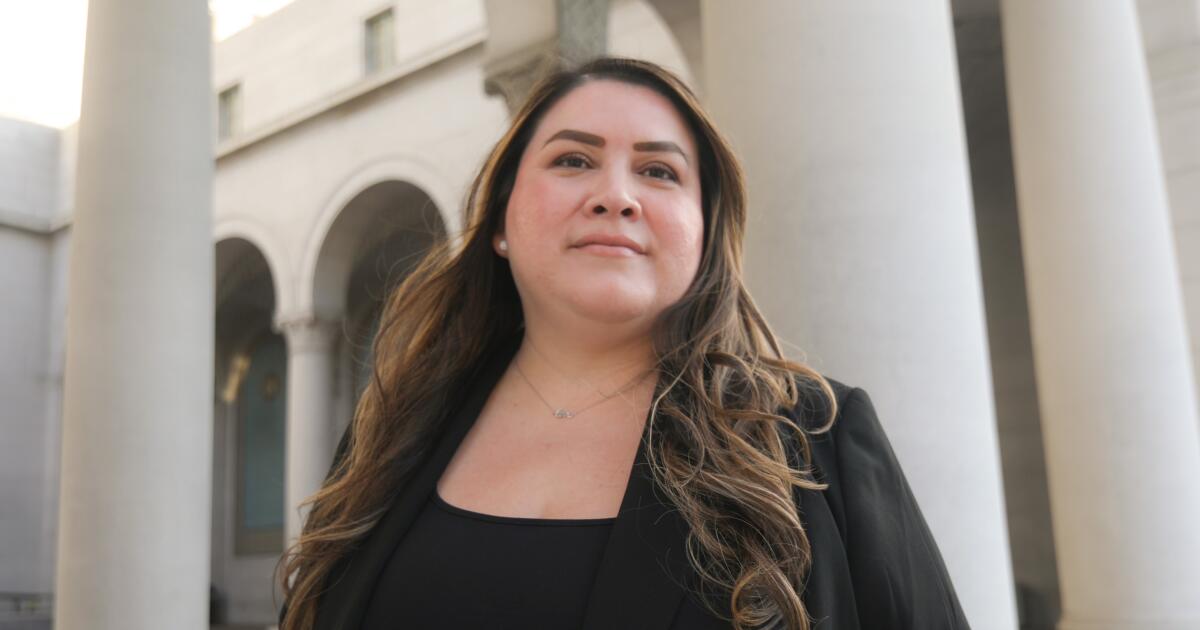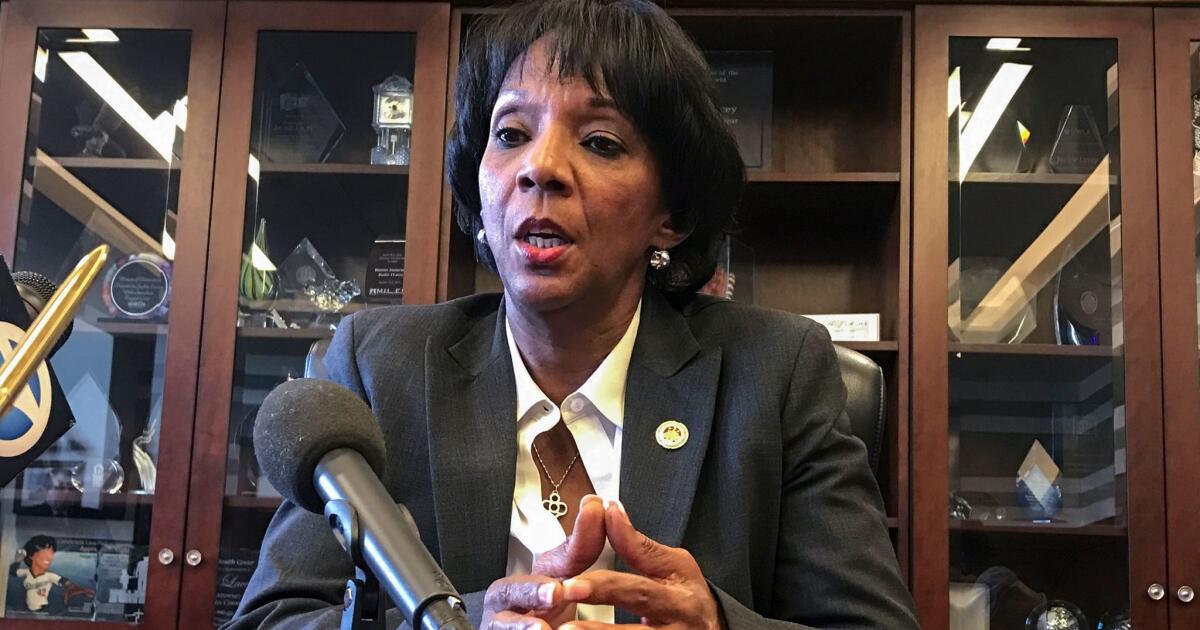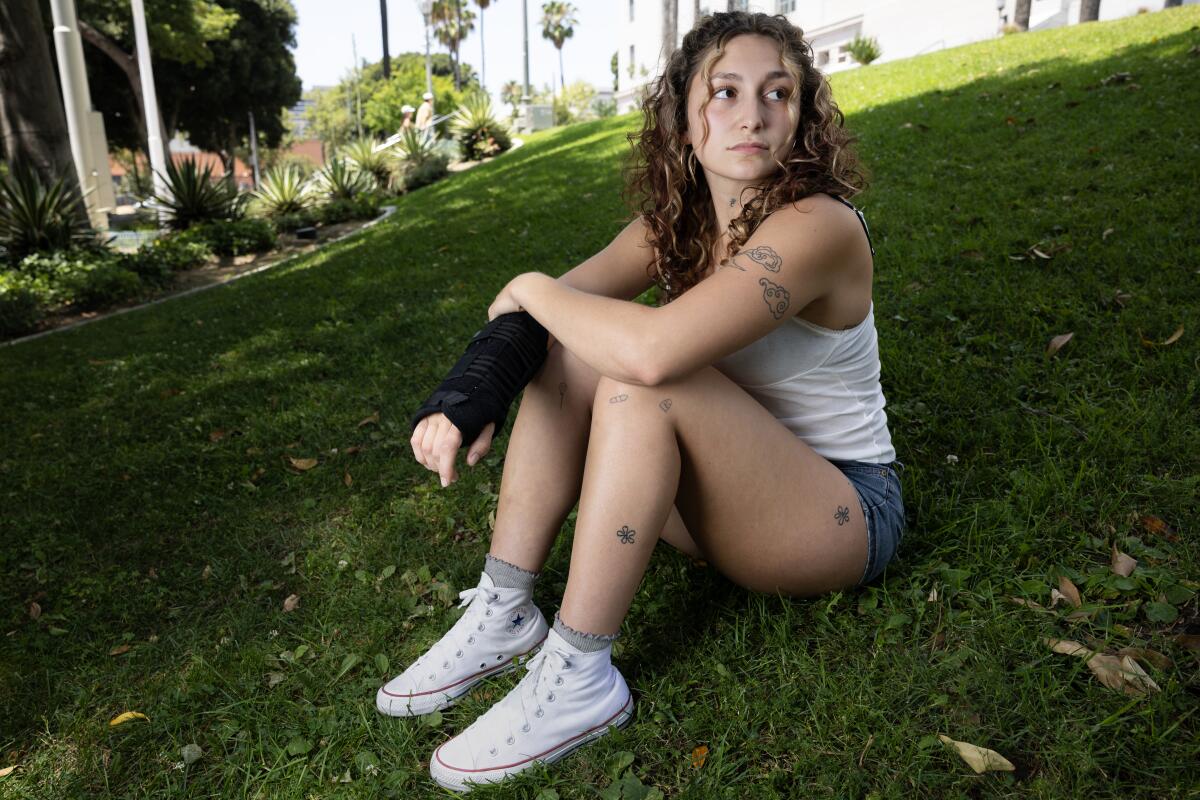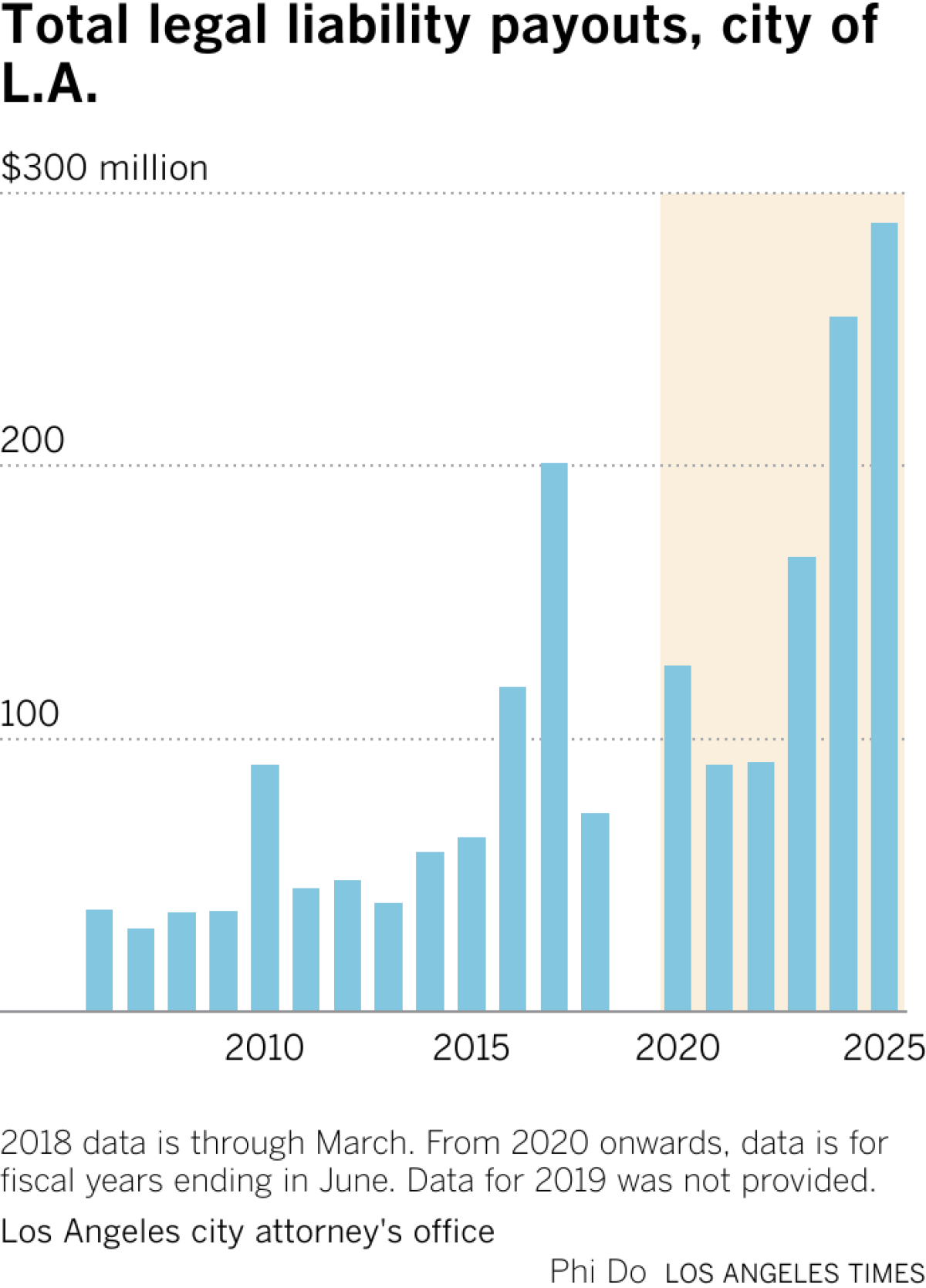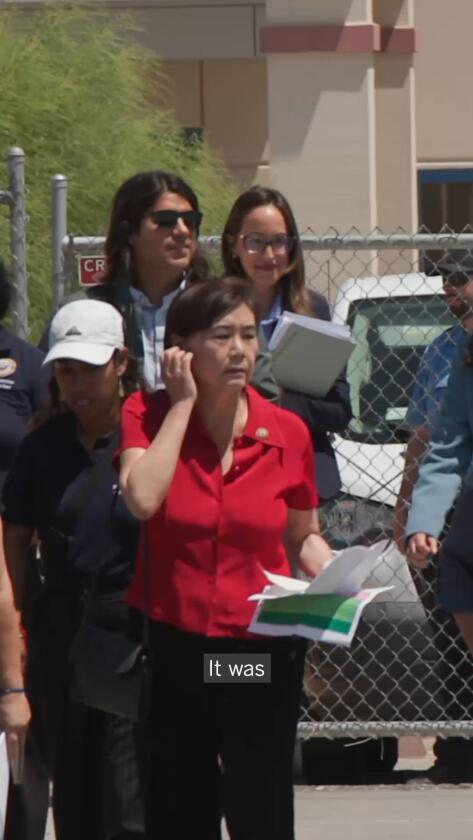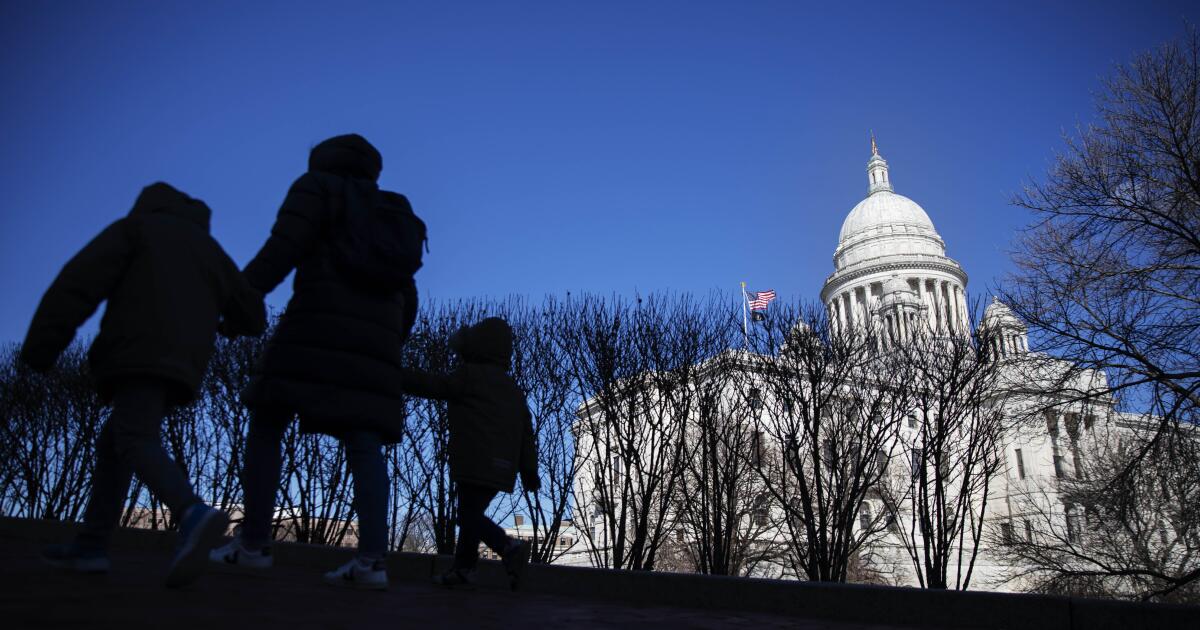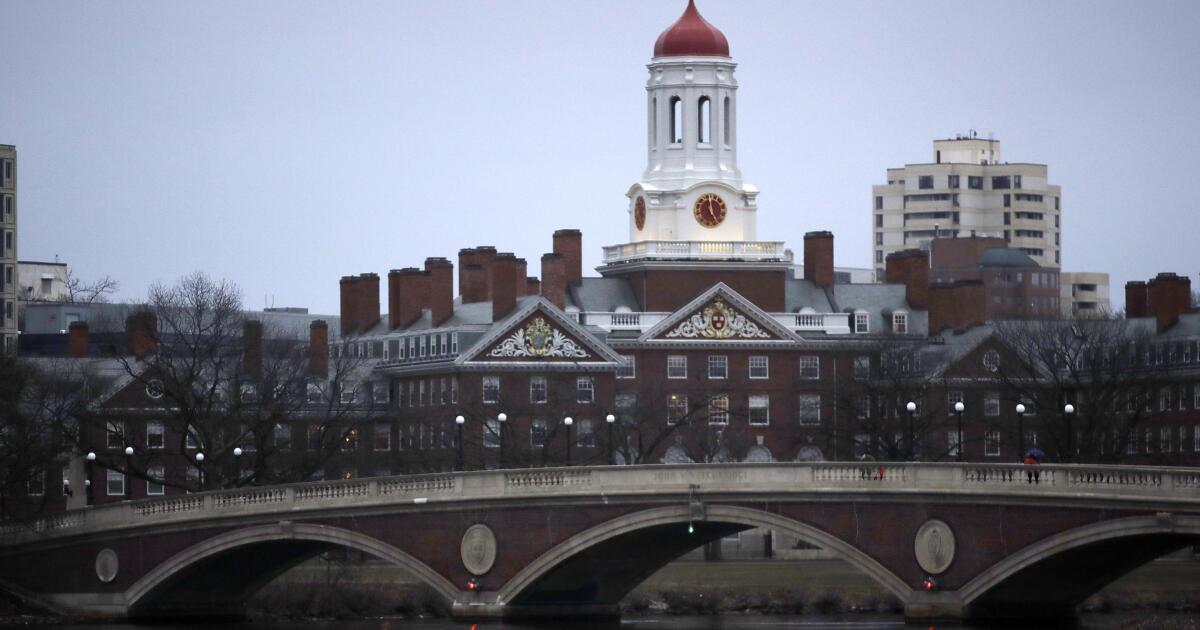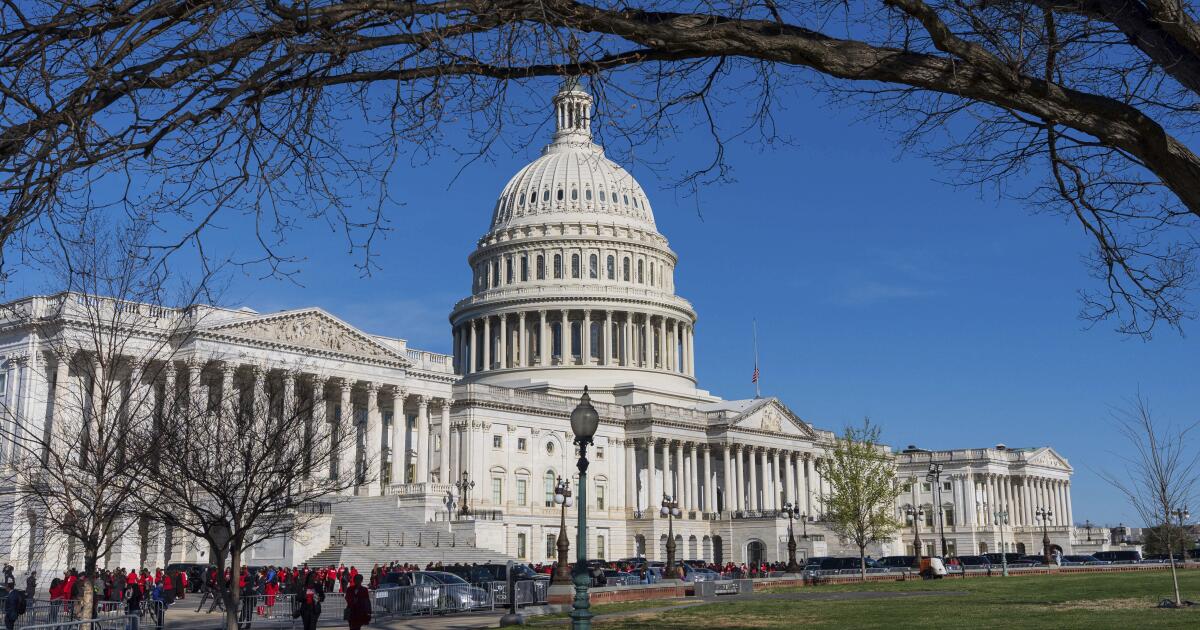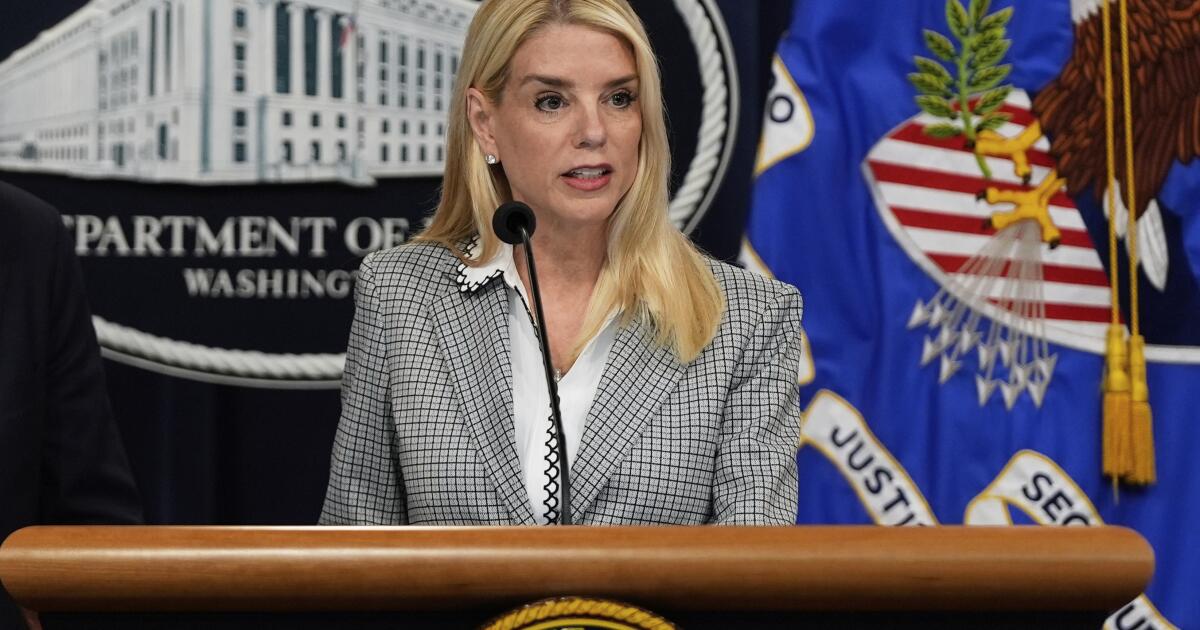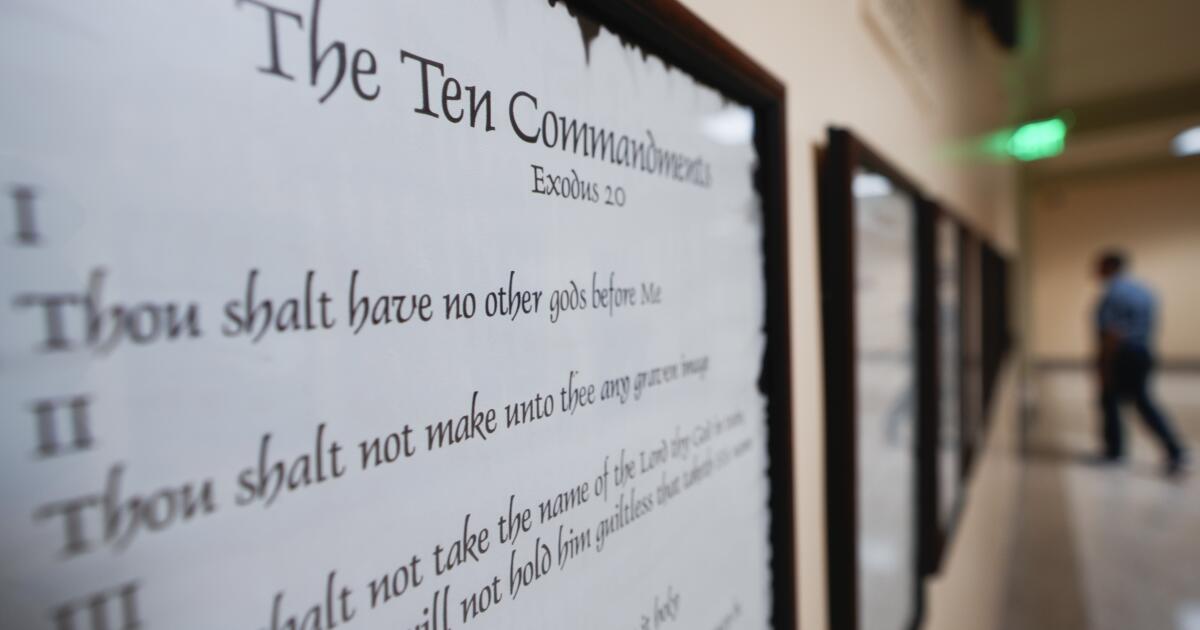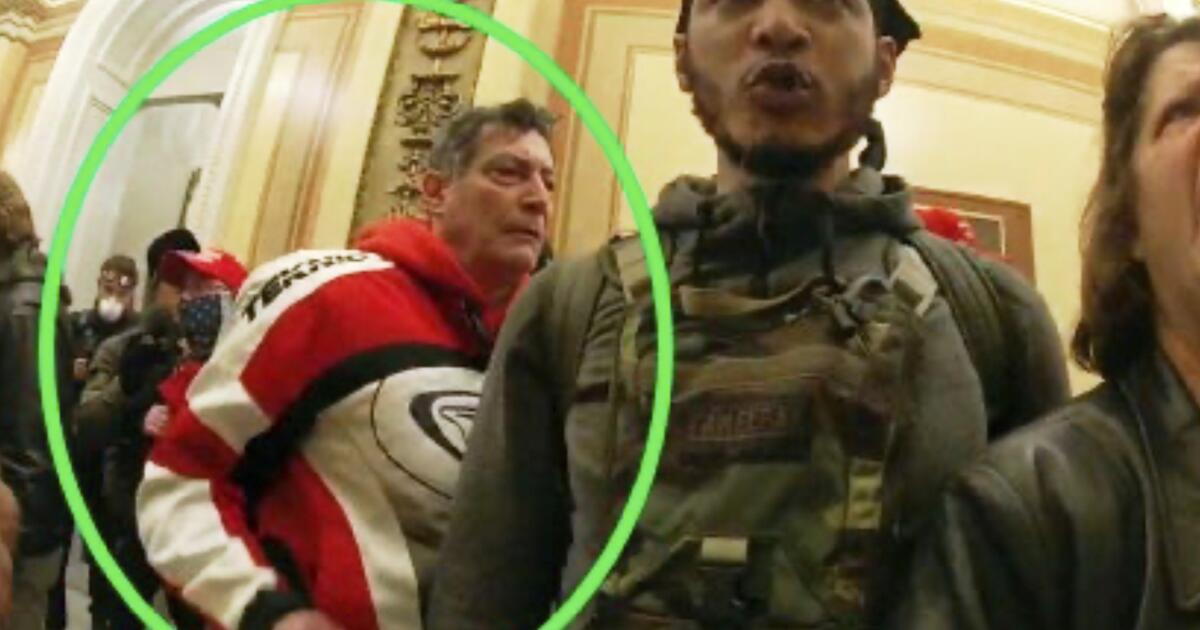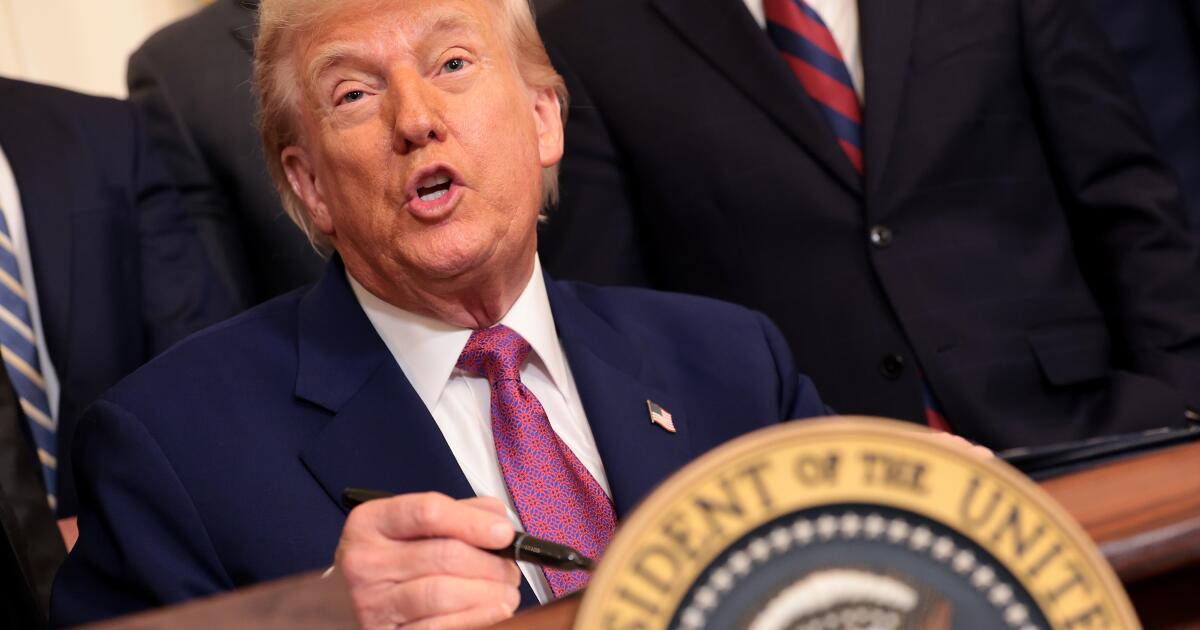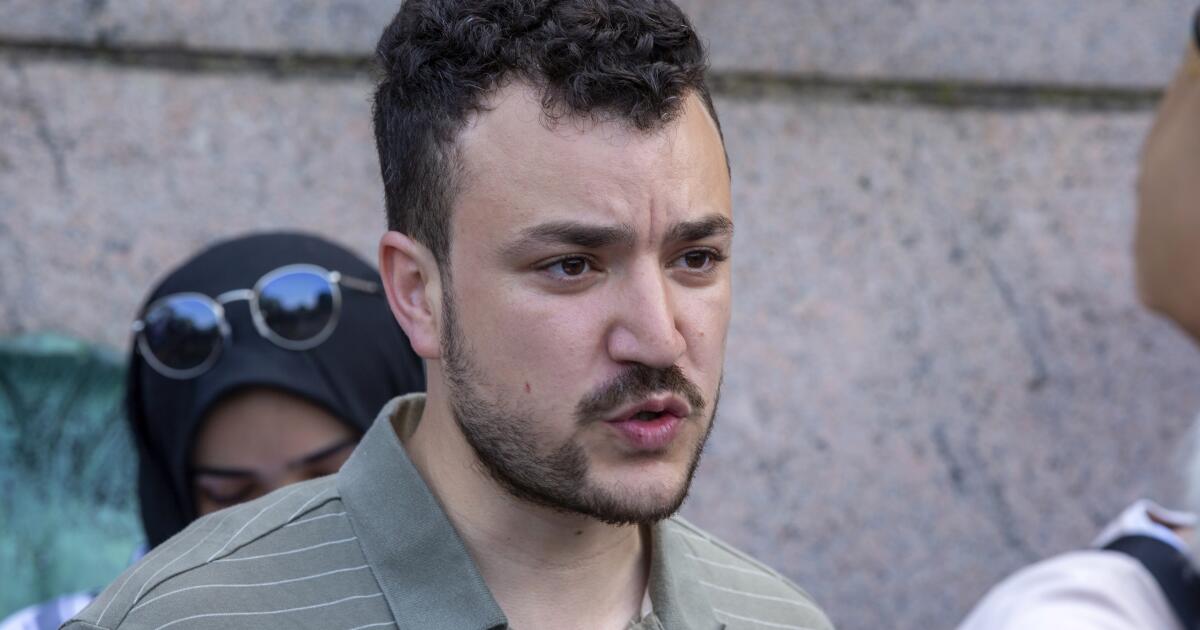Texas family detention center witnesses describe adults fighting kids for clean water
McALLEN, Texas — Adults fighting kids for clean water, despondent toddlers, and a child with swollen feet denied a medical exam: These first-hand accounts from immigrant families at detention centers included in a motion filed by advocates Friday night are offering a glimpse of conditions at Texas facilities.
Families shared their testimonies with immigrant advocates filing a lawsuit to prevent the Trump administration from terminating the Flores settlement agreement, a 1990s-era policy that requires immigrant children detained in federal custody be held in safe and sanitary conditions.
The agreement could challenge President Trump’s family detention provisions in his massive tax and spending bill, which also seeks to make the detention time indefinite and comes as the administration ramps up arrests of immigrants nationwide.
“At a time when Congress is considering funding the indefinite detention of children and families, defending the Flores Settlement is more urgent than ever,” Mishan Wroe, a senior immigration attorney at the National Center for Youth Law, said in a statement Friday.
Advocates with the center, as well as the Center for Human Rights and Constitutional Law, RAICES and Children’s Rights contacted or visited children and their families held in two Texas family detention centers in Dilley and Karnes, which reopened this year.
The conditions of the family detention facilities were undisclosed until immigration attorneys filed an opposing motion Friday night before a California federal court.
The oversight of the detention facilities was possible because of the settlement, and the visits help ensure standards of compliance and transparency, said Sergio Perez, the executive director of the Center for Human Rights and Constitutional Law. Without the settlement, those overseeing the facilities would lose access to them and could not document what is happening inside.
Out of 90 families who spoke to RAICES, an immigration legal support group, since March, 40 expressed medical concerns, according to the court documents. Several testimonies expressed concern over water quantity and quality.
Emailed messages seeking comment were sent to the office of U.S. Atty. Gen. Pam Bondi and to CoreCivic and Geo Group, the private prison companies that operate the detention facilities in Dilley and Karnes, respectively. There was no response from Bondi’s office or the operators of the facilities as of midday Saturday.
One mother was told she would have to use tap water for formula for her 9-month-old, who had diarrhea for three days after. A 16-year-old girl described people scrambling over one another for water.
“We don’t get enough water. They put out a little case of water, and everyone has to run for it,” said the declaration from the girl held with her mother and two younger siblings at the Karnes County Immigration Processing Center. “An adult here even pushed my little sister out of the way to get to the water first.”
Faisal Al-Juburi, chief external affairs officer for RAICES, said Friday in a statement that the conditions “only serve to reinforce the vital need for transparent and enforceable standards and accountability measures,” citing an “unconscionable obstruction of medical care for those with acute, chronic, and terminal illnesses.”
One family with a young boy with cancer said he missed his doctor’s appointment after the family was arrested after they attended an immigration court hearing. He is now experiencing relapse symptoms, according to the motion. Another family said their 9-month-old lost more than 8 pounds while in detention for a month.
Children spoke openly about their trauma during visits with legal monitors, including a 12-year-old boy with a blood condition. He reported that his feet became too inflamed to walk, and even though he saw a doctor, he was denied further testing. Now, he stays mostly off his feet. “It hurts when I walk,” he said in a court declaration.
Arrests have left psychological trauma. A mother of a 3-year-old boy who saw agents go inside his babysitter’s home with guns started acting differently after detention. She said he now throws himself on the ground, bruises himself and refuses to eat most days.
Growing concerns as ICE ramps up operations
Many of the families in detention were already living in the U.S., reflecting the recent shift from immigration arrests at the border to internal operations.
Stephen Miller, White House deputy chief of staff and main architect of Trump’s immigration policies, said U.S. Immigration and Customs Enforcement officers would target at least 3,000 arrests a day, up from about 650 a day during the first few months of Trump’s second term.
Leecia Welch, the deputy legal director at Children’s Rights, said that as bad as facility conditions are, they will only get worse as more immigrants are brought in.
“As of early June, the census at Dilley was around 300, and only two of its five areas were open,” Welch said of her visits. “With a capacity of around 2,400, it’s hard to imagine what it would be like with 2,000 more people.”
Pediatricians such as Dr. Marsha Griffin with the American Academy of Pediatrics Council said they are concerned and are advocating across the country to allow pediatric monitors with child welfare experts inside the facilities.
Challenge to Flores agreement
The Flores agreement is poised to become more relevant if Trump’s tax and spending legislation, known as the One Big Beautiful Bill Act, passes with the current language allowing the indefinite detention of immigrant families, which is not allowed under the Flores agreement.
Trump’s legislation approved by the House also proposes setting aside $45 billion in funding, a threefold spending increase, over the next four years to expand ICE detention of adults and families. The Senate is now considering the bill.
Under these increased efforts to add more detention space, Geo Group, the corporation operating the detention facility in Karnes, will soon be reopening an infamous prison — which housed gangsters Al Capone and Machine Gun Kelly — for migrant detention in Leavenworth, Kan.
Immigration advocates argue that if the settlement were terminated, the government would need to create regulations that conform to the agreement’s terms.
“Plaintiffs did not settle for policy making — they settled for rulemaking,” the motion read.
The federal government will have a chance to submit a reply brief. A court hearing is scheduled for mid-July.
Gonzalez writes for the Associated Press.
